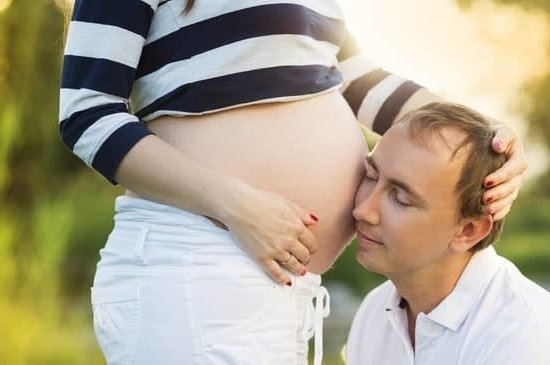## What Is Contraction In Pregnancy?
Contractions in pregnancy are a natural process that indicate the start of labor, which eventually results in the delivery of a new baby. While this process can be exciting and a joyous occasion, it can also be a scary moment for expecting parents. For this reason, it’s important to have an understanding of when contractions typically begin and what they feel like.
### When Do Contractions Begin?
Contractions typically begin occurring in the later stages of pregnancy, usually after the 37th week. Some mothers experience contractions much earlier than this, but it is not common. The frequency and intensity of the contractions slowly increase as labor progresses and the baby moves further into the birth canal.
### What Do Contractions Feel Like?
The feeling of contractions can vary from mother to mother, but typically contractions are experienced as a tightening of the uterus. This tight feeling can range from feeling merely uncomfortable and easily bearable, to feeling like a more intense cramping pain. If a pregnant woman experiences cramps, it is important for her to assess if the cramping is coming from the lower back region and radiating out, or if the cramps feel centralized and focused on her abdomen. If the cramps are centralized, this could suggest labor is beginning and it’s time to call her doctor or midwife.
### What Are The Different Types Of Contractions?
* **Braxton Hicks**: Braxton Hicks are short, painless, and typically infrequent contractions that begin during the first or second trimester of pregnancy. These contractions have been referred to as “practice” contractions as they help the uterus and body prepare for labor.
* **Early labor**: contractions typically start feeling like mild to moderate cramps, which become stronger and more intense over time. The contractions occur in regular intervals that gradually get closer together.
* **Active labor**: contractions become much stronger and are experienced in the lower back and abdomen.
* **Transitional labor**: the contractions occur more frequently and become even stronger and more intense. These contractions eventually lead to the delivery of the baby.
It’s important to stay in close contact with a healthcare provider throughout the pregnancy so the mother can understand what types of contractions she is experiencing and if labor is actually beginning.
### How To Stop Contractions
If contractions do happen earlier than expected, there are some steps that may be taken to help slow down or stop the process. Becoming extra hydrated, eating a light snack, or resting may all be helpful in helping slow down the process. However, it’s important to understand that contractions are a natural process and cannot always be prevented from happening.
It’s also important to understand that if contractions are strong and painful, it is important for the mother to discuss this with her healthcare provider right away.
The process of labor can be scary and labor contractions can vary in intensity, but understanding the process can help expecting parents feel more prepared before labor begins.

Welcome to my fertility blog. This is a space where I will be sharing my experiences as I navigate through the world of fertility treatments, as well as provide information and resources about fertility and pregnancy.


